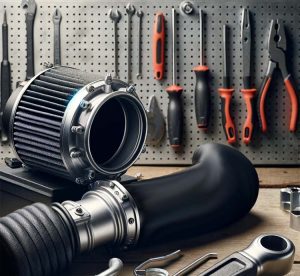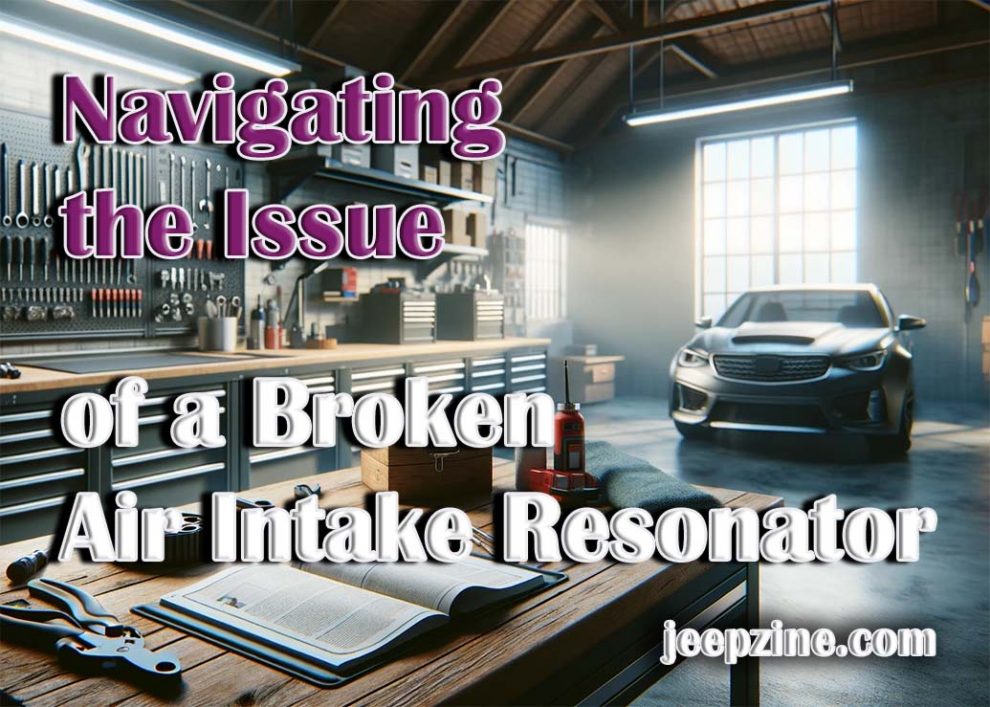The air intake resonator, a key component in your vehicle’s engine, plays a pivotal role in reducing noise from the air intake process and assisting in the smooth flow of air to the engine. Serving more than just a noise-cancelling function, it contributes significantly to the engine’s efficiency and overall vehicle performance. When the resonator is intact, it allows for a harmonious balance between noise reduction and airflow. However, when an air intake resonator is broken, it not only elevates the noise levels but can also affect the engine’s performance. Understanding the function and significance of this component is the first step in addressing any issues that arise from its malfunction.
Signs of a Broken Air Intake Resonator
Identifying a broken air intake resonator early is key to avoiding further complications with your vehicle. Common symptoms include:
- A noticeable increase in engine noise, especially a deep, droning sound not typical of the vehicle’s normal operating sounds.
- Decreased fuel efficiency as the engine compensates for the disrupted air flow.
- Reduced engine power and responsiveness, often perceivable during acceleration.
- An irregular or rough engine idle, indicating the engine is not operating smoothly.
Recognizing these signs can prompt a timely investigation, potentially saving the vehicle owner from more extensive and expensive repairs.
Diagnosing a Broken Resonator

Repair or Replace: Addressing the Issue
Once a diagnosis confirms a broken air intake resonator, deciding whether to repair or replace the component is the next step. For many vehicles, replacement is often the most straightforward and effective solution, ensuring the air intake system returns to optimal functionality. The process typically involves:
- Removing the damaged resonator from the air intake assembly.
- Selecting a high-quality replacement resonator that matches the vehicle’s specifications.
- Installing the new resonator, ensuring all connections are secure and leak-free.
Addressing the issue promptly can restore engine performance, reduce noise, and improve overall vehicle efficiency.
Enhancing Performance: Upgrades and Maintenance
For enthusiasts looking to not only fix but also upgrade their vehicle, considering an aftermarket solution like the Best Cold Air Intake For Jeep can offer performance benefits. Such upgrades can improve air flow, increase horsepower, and potentially enhance fuel efficiency. Alongside repairs, regular maintenance of the air intake system is crucial for optimal performance. This includes regularly checking the air filter and replacing it as needed, inspecting air intake hoses and connections for leaks or wear and cleaning the air intake system to remove debris and buildup. Implementing these maintenance practices can help prevent future issues and ensure the vehicle operates at its best.
Conclusion
The journey from identifying to resolving a broken air intake resonator is pivotal in preserving the integrity and performance of your vehicle’s engine. A resonator in prime condition not only ensures a quieter, more pleasant driving experience but also contributes significantly to the efficiency of the engine’s air intake system. Recognizing the early signs of a malfunction – ranging from abnormal engine noises to a decline in performance – can prevent more serious complications that may arise from neglected air intake issues.
Addressing the problem, whether through repair or replacement, demands attention to detail and an understanding of your vehicle’s specific needs. By staying vigilant and responsive to your vehicle’s needs, you can ensure a level of performance and reliability that stands the test of time and usage. With the right approach and resources, you can navigate this challenge successfully, ensuring your vehicle continues to operate at its best, mile after mile.

